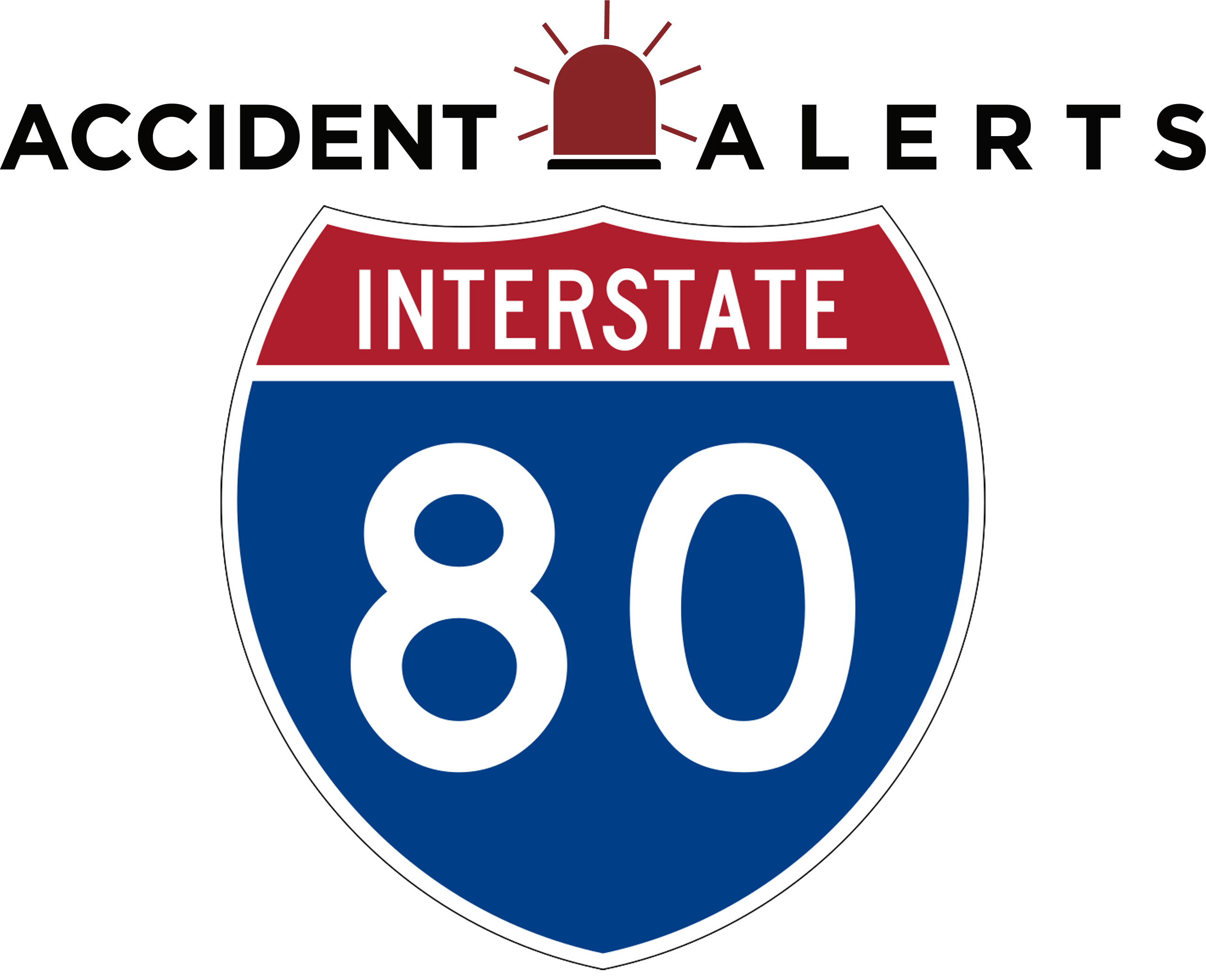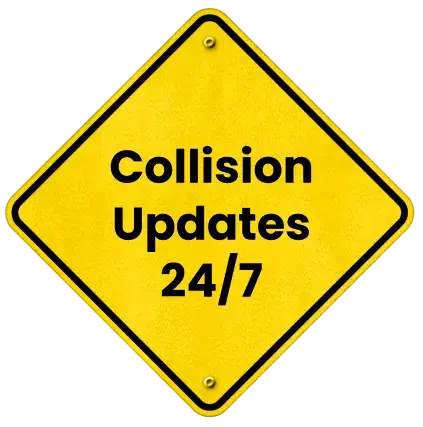
Latest Accidents
More IncidentsInterstate 80 Accident News and Resources
Welcome to I80Accidents.com
Interstate 80 (I-80) holds a significant role in the vast network of highways that crisscross the United States, serving as one of the most vital and frequently traveled routes in the country. Spanning more than 2,900 miles, this coast-to-coast highway connects the East and West Coasts, facilitating not just local travel but also long-distance journeys. Every day, thousands of diverse drivers take to I-80, including commuters who rely on it for their daily work routines, long-haul truckers transporting goods across states, and vacationers eager to explore new destinations. Its importance cannot be overstated as it plays a critical part in the nation’s economy and transportation infrastructure.
At I80Accidents.com, we fully understand the challenges faced by drivers on this bustling highway. Our mission is to provide clear, accurate, and state-specific resources tailored to assist those involved in accidents along I-80. We recognize that accidents can be both overwhelming and confusing experiences, filled with questions and uncertainties.
We strive to offer comprehensive guides that address your specific needs. Whether you’re seeking assistance in obtaining a police crash report to document the incident or looking to understand the various legal options available to you after an accident, while also helping you connect with lawyers and other resources in your area to equip you with reliable information and support during what can be a difficult time. By providing this valuable guidance, we hope to empower drivers to navigate the aftermath of an accident on I-80 with confidence and clarity.
Overview of the Interstate 80
Stretching an impressive 2,900 miles, Interstate 80 holds the title of the second-longest highway in the United States. This vital transportation artery begins in the vibrant city of San Francisco, California, and traverses the country to terminate in Teaneck, New Jersey, which is located just outside the bustling metropolis of New York City. The significance of I-80 lies not only in its length but also in its ability to connect the picturesque Pacific Coast with the dynamic East Coast, making it a critical route for both commercial and recreational travel.
As it meanders across the nation, Interstate 80 cuts through 11 diverse states, each contributing its own unique characteristics to the journey. Drivers encounter a wide array of landscapes, ranging from the towering high mountain passes that challenge even the most seasoned drivers to the expansive open plains that offer breathtaking views of the horizon. Additionally, the highway journeys through numerous urban centers, which pose their own set of driving challenges, including heavy traffic and complex interchange systems.
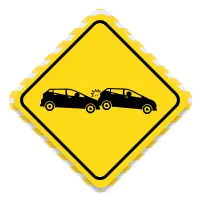
Rear-end
Collisions:
This type of accident occurs when a vehicle hits the vehicle in front of it on the roadway. There are many reasons why this type of accident takes place, often due to driver error while on the interstate..
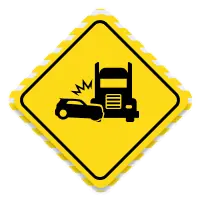
Truck
Accidents:
Roughly 50% of truck accidents on the interstate take over four hours to clean up. Extensive delays along these narrow roadways make traveling on the interstate even more hazardous.
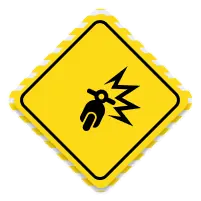
Motorcycle
Accidents:
When a motorcycle accident occurs the results can be severe for a rider. That's because motorcycles & their riders have little protection when involved in an accident with a larger car or truck.
The states and key cities that I-80 traverses include:
- California: Starting point, known for its scenic beauty and bustling metropolitan areas.
I-80 begins in San Francisco and travels through Oakland and Sacramento before climbing into the Sierra Nevada mountains via Donner Pass. - Nevada: Offers vast deserts and mountainous regions, adding adventure to the drive.
The highway crosses the state through Reno, Fernley, Winnemucca, and Elko, cutting through high desert terrain with limited services in between. - Utah: Renowned for its stunning national parks and unique geological formations.
I-80 passes north of the Great Salt Lake and runs directly through Salt Lake City, providing a major corridor for freight and commuters alike. - Wyoming: Home to wide-open spaces and the majestic Rocky Mountains.
This stretch includes Evanston, Rock Springs, Rawlins, Laramie, and Cheyenne, with long, open roads and frequent winter storms. - Nebraska: Features rural landscapes and agricultural expanses.
I-80 connects the state’s two largest cities, Lincoln and Omaha, while crossing vast rural plains and farming regions in between. - Iowa: Known for its rolling hills and farmlands.
Travelers pass through Council Bluffs, Des Moines, Iowa City, and Davenport, encountering frequent road construction and steady interstate traffic. - Illinois: A blend of urban settings and picturesque countryside.
From the Quad Cities through Joliet and into the western suburbs of Chicago, I-80 merges with other major interstates and sees heavy congestion. - Indiana: Offers a mix of farmland and small towns.
In Indiana, I-80 runs concurrently with I-94 across the northern part of the state, passing through Hammond and Gary near the Chicago metro area. - Ohio: Includes both rural landscapes and urban environments.
The route continues across northern Ohio, serving cities like Toledo, Elyria, and Youngstown, with several toll sections along the Ohio Turnpike. - Pennsylvania: Rich in history and scenic byways.
I-80 spans the entire width of northern Pennsylvania, passing through remote mountain terrain and towns like DuBois, Clearfield, and Stroudsburg. - New Jersey: The final stretch before reaching the bustling Big Apple.
I-80 concludes in Paterson and Teaneck near the George Washington Bridge, navigating densely packed highways and urban traffic zones in the NYC metro area.
Each of these states presents unique driving conditions and potential accident risks that drivers should be aware of. For instance, the geographical and weather variations can dramatically affect road conditions. Our site is dedicated to providing comprehensive guidance and resources specifically focused on the 8 most critical states along I-80, where traffic volume and crash risk are particularly high. By offering insights into local driving hazards and helpful tips, we aim to enhance the safety and comfort of every traveler on this monumental highway.
Furthermore, these urban hubs contribute to heavy traffic volumes, frequent congestion, and complex interchanges — all of which increase the likelihood of collisions, especially during peak travel hours and weather events.
Common Accident Causes on I-80
Crashes on Interstate 80 are as diverse as the regions it crosses. From steep mountain terrain to multi-lane urban expressways, the risks vary widely from state to state. However, several accident causes are consistent throughout the I-80 corridor.
Common accident types and causes include:
- High-speed collisions: Particularly near urban centers and highway interchanges
- Rear-end accidents: Often linked to sudden traffic slowdowns, construction zones, and congestion
- Weather-related crashes: Snowstorms in Utah, Idaho, and Montana; flash floods in Southern California and Nevada
- Wildlife collisions: Especially in rural parts of Idaho and Montana
- DUI-related crashes: Particularly near Las Vegas and other entertainment hubs
- Fatigue-related accidents: In long rural stretches with minimal services
Understanding these risks can help drivers remain alert and avoid common hazards along the route. Each of our state-specific guides explores these risks in more detail, offering context and prevention tips based on the geography, infrastructure, and weather conditions of that region.
How to Obtain a Police Accident Report After an I-80 Crash
If you’ve been involved in an accident on I-80, obtaining the official police crash report is one of the first and most important steps. This document contains vital information such as:
- Names and contact info for involved parties
- Date, time, and location of the crash
- Diagram of the accident scene
- Contributing factors and officer observations
- Any citations issued
Ways to request a crash report may include:
- Online platforms through your state’s DMV or Department of Public Safety. The agency where you submit this could also be dependent on a different state department.
- By mail using a crash report request form.
- In person at the local police department or highway patrol office
Each state along I-80 has its own process, which is why we’ve created detailed state-specific crash report pages to guide you step by step.
Driving Safety Tips for I-80 Travelers
Interstate 80 stretches across an incredibly diverse range of terrain — from the foggy coastlines of Northern California and the high deserts of Nevada, to the snowy mountain passes in Wyoming and the crowded urban highways of New Jersey. Because of this, drivers need to be especially alert and flexible when navigating any stretch of I-80.
Whether you’re a long-haul trucker, a vacationer heading cross-country, or a daily commuter, these safety tips can help reduce your risk of a crash and make your journey smoother and safer.
- Plan Ahead — Especially for Remote or Mountainous Areas: Some segments of I-80, especially through Nevada, Wyoming, and western Utah, have long stretches with few services. Always check your fuel level, keep an emergency kit in your vehicle, and monitor road closures or weather advisories before you set out — particularly in winter.
- Slow Down in Construction Zones: Many I-80 states experience frequent road construction, especially during summer and early fall. Even if no workers are present, reduced speed limits are enforceable and often carry steep fines. Slow down early, follow detour signage carefully, and stay out of closed lanes.
- Drive Defensively in Urban Areas: In areas like Sacramento, Chicago, and northern New Jersey, I-80 merges with multiple other routes and sees extremely high traffic volumes. Watch for merging vehicles, sudden lane shifts, and aggressive drivers. Avoid distractions, use your mirrors often, and anticipate heavy braking.
- Prepare for Weather Extremes: Wyoming and Pennsylvania, in particular, are known for sudden snowstorms and icy conditions on I-80. If you’re traveling through these states between October and April, be sure to carry snow chains (if applicable), and allow extra time for travel.
- Stay Focused — Avoid Distractions: I-80 is long, and fatigue or boredom can tempt drivers to use their phones or multitask. Always use hands-free devices and avoid texting. Consider taking breaks every 2–3 hours, especially on rural stretches where scenery changes little and concentration can slip.
Driving Safety Tips for I-80 Travelers
Interstate 80 stretches across an incredibly diverse range of terrain — from the foggy coastlines of Northern California and the high deserts of Nevada, to the snowy mountain passes in Wyoming and the crowded urban highways of New Jersey. Because of this, drivers need to be especially alert and flexible when navigating any stretch of I-80.
Whether you’re a long-haul trucker, a vacationer heading cross-country, or a daily commuter, these safety tips can help reduce your risk of a crash and make your journey smoother and safer.
- Plan Ahead — Especially for Remote or Mountainous Areas: Some segments of I-80, especially through Nevada, Wyoming, and western Utah, have long stretches with few services. Always check your fuel level, keep an emergency kit in your vehicle, and monitor road closures or weather advisories before you set out — particularly in winter.
- Slow Down in Construction Zones: Many I-80 states experience frequent road construction, especially during summer and early fall. Even if no workers are present, reduced speed limits are enforceable and often carry steep fines. Slow down early, follow detour signage carefully, and stay out of closed lanes.
- Drive Defensively in Urban Areas: In areas like Sacramento, Chicago, and northern New Jersey, I-80 merges with multiple other routes and sees extremely high traffic volumes. Watch for merging vehicles, sudden lane shifts, and aggressive drivers. Avoid distractions, use your mirrors often, and anticipate heavy braking.
- Prepare for Weather Extremes: Wyoming and Pennsylvania, in particular, are known for sudden snowstorms and icy conditions on I-80. If you’re traveling through these states between October and April, be sure to carry snow chains (if applicable), and allow extra time for travel.
- Stay Focused — Avoid Distractions: I-80 is long, and fatigue or boredom can tempt drivers to use their phones or multitask. Always use hands-free devices and avoid texting. Consider taking breaks every 2–3 hours, especially on rural stretches where scenery changes little and concentration can slip.
Frequently Asked Questions
How do I get a copy of my I-80 accident report?
The process depends on the state and the law enforcement agency that responded to the crash. Most states provide crash reports through:
- State Police/Highway Patrol portals
- Local police department websites
- In-person or mailed requests
Visit our state-specific pages for direct links. You’ll usually need the date, location, driver name(s), and sometimes the report number.
What should I do immediately after an accident on I-80?
- Move to safety, if possible.
- Call 911 to report the crash.
- Exchange information with the other driver(s).
- Document the scene with photos and notes.
- Seek medical attention, even if you feel okay.
- Request a copy of the police report as soon as it’s available.
Do I need to report every accident to the police?
In most I-80 states, yes, especially if:
- Someone is injured
- A vehicle is towed
- There’s property damage above $500–$1,000
Even minor crashes should be reported to create a legal record for insurance and liability purposes.
Can I request an I-80 crash report if I wasn’t the driver?
In some states, only involved parties (drivers, passengers, insurance reps, or attorneys) can request reports. Other states allow anyone with the proper information to request a copy. Always check the agency’s requirements — some will ask for a notarized form or proof of interest.
Should I contact a lawyer after an accident on I-80?
You may not always need a personal injury attorney after an accident, but there are key situations where legal representation is wise. If you’ve been seriously injured, the complexities of medical bills, rehabilitation, and lost wages can be overwhelming, making legal assistance crucial. In accidents involving large trucks or out-of-state drivers, an attorney familiar with the relevant laws can protect your interests.
If there’s a dispute over fault, or if insurance companies are stalling or underpaying, a lawyer can help present your case and negotiate for a fair settlement. Additionally, if you’ve lost wages or face ongoing medical expenses, an attorney can assist in calculating your economic losses and pursuing compensation.
Most personal injury attorneys offer free consultations and work on a contingency fee basis, which means they only get paid if you win your case. This makes seeking legal help more accessible. Considering these factors can help you decide whether to hire a personal injury attorney after an accident.

Be extra alert:
This seems obvious, but try to be extra alert when driving on dangerous highways. Act as if you’re driving in poor road conditions (heavy rain or snow or poor visibility).

Plan ahead:
If you’re traveling long distances on a road trip or for work or pleasure, plan ahead. Consider when you’ll hit heavy-traffic areas and the weather conditions throughout your trip.

Rest:
If you feel drowsy, take a break and let someone else drive or pull off in a safe place for a quick nap. Here are some keen warning signs of drowsy driving: yawning or blinking frequently, watering eyes, difficulty recalling the past few miles that you’ve driven, missing exits, or drifting from your lane.

Obey traffic laws:
Always obey traffic laws. Not only will this prevent you from receiving a ticket, but you’re less likely to get into a fatal car accident if you obey the speed limit and other traffic regulations.
